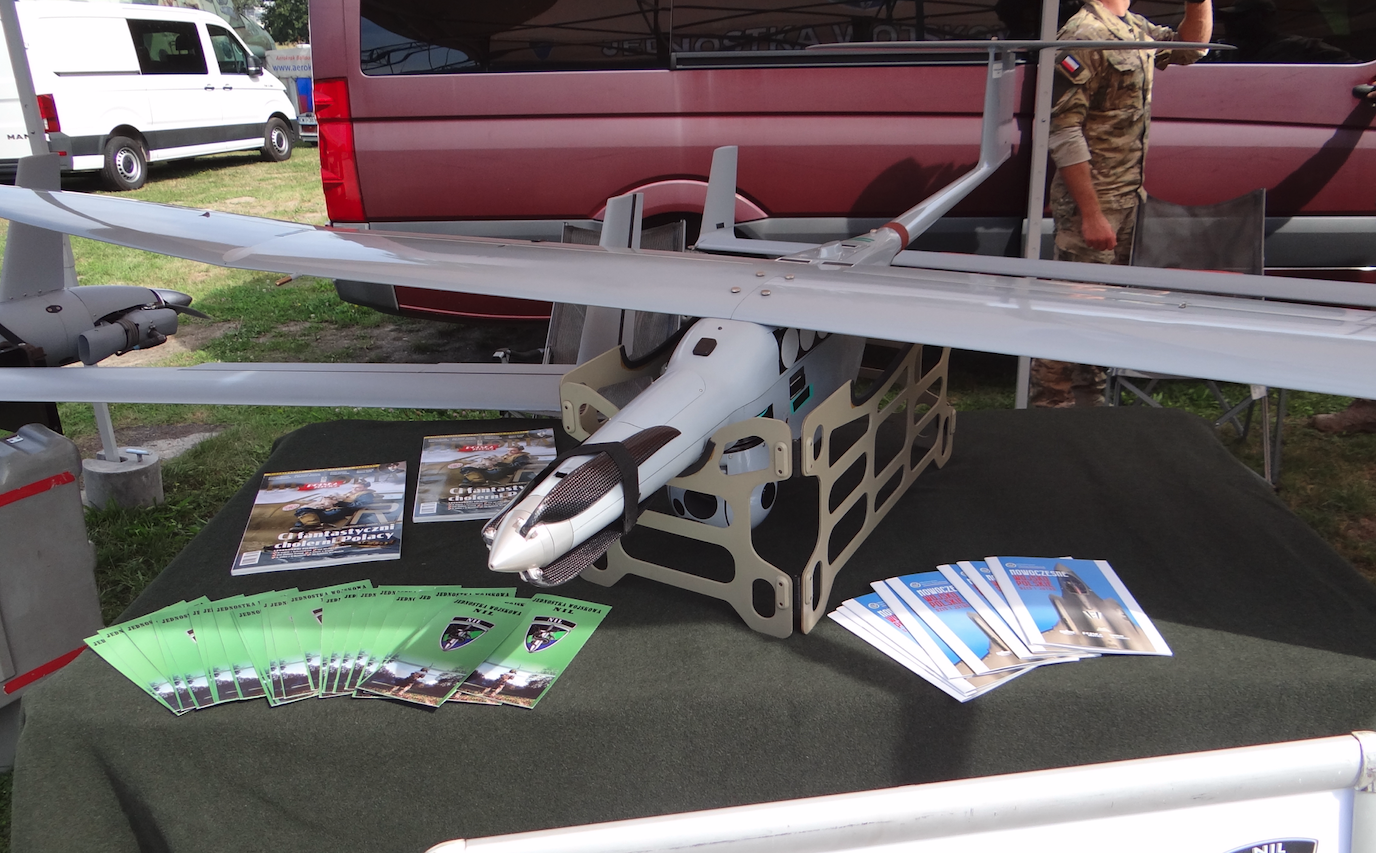Kraków 2025-05-09
WB Electronics FlyEye.
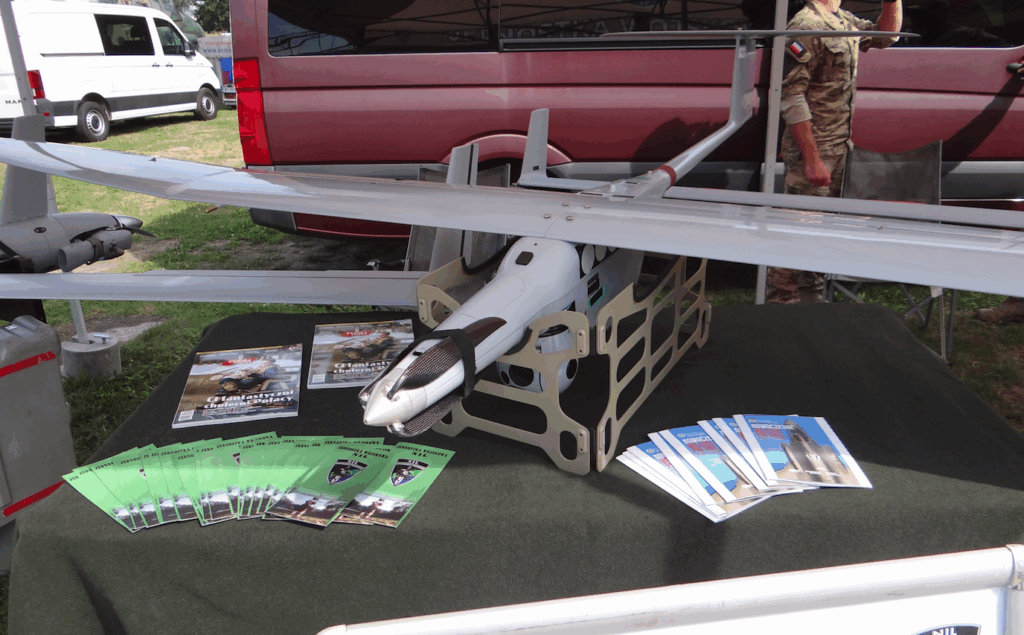
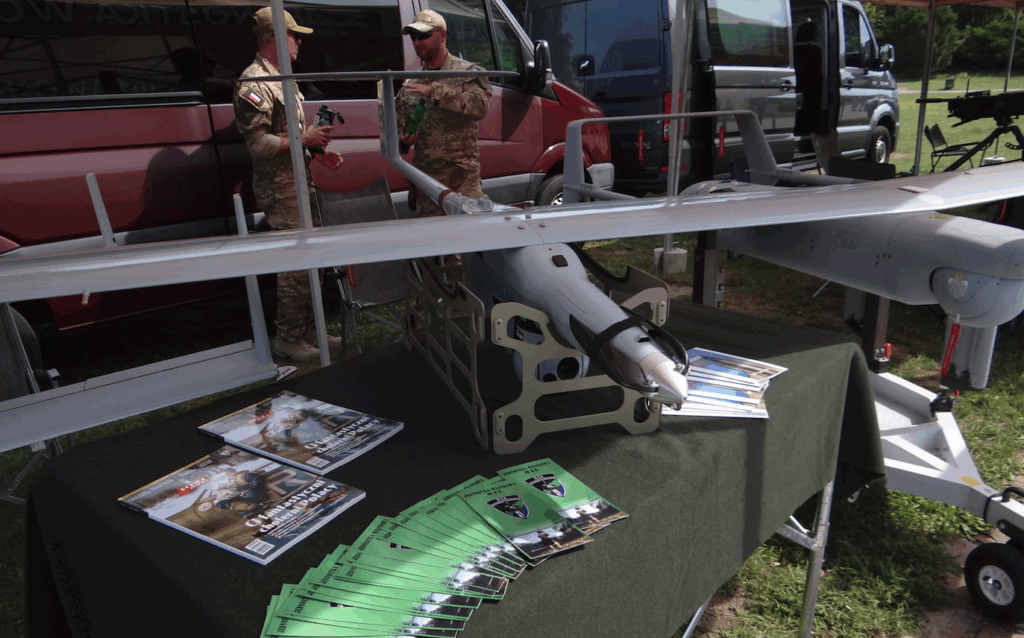
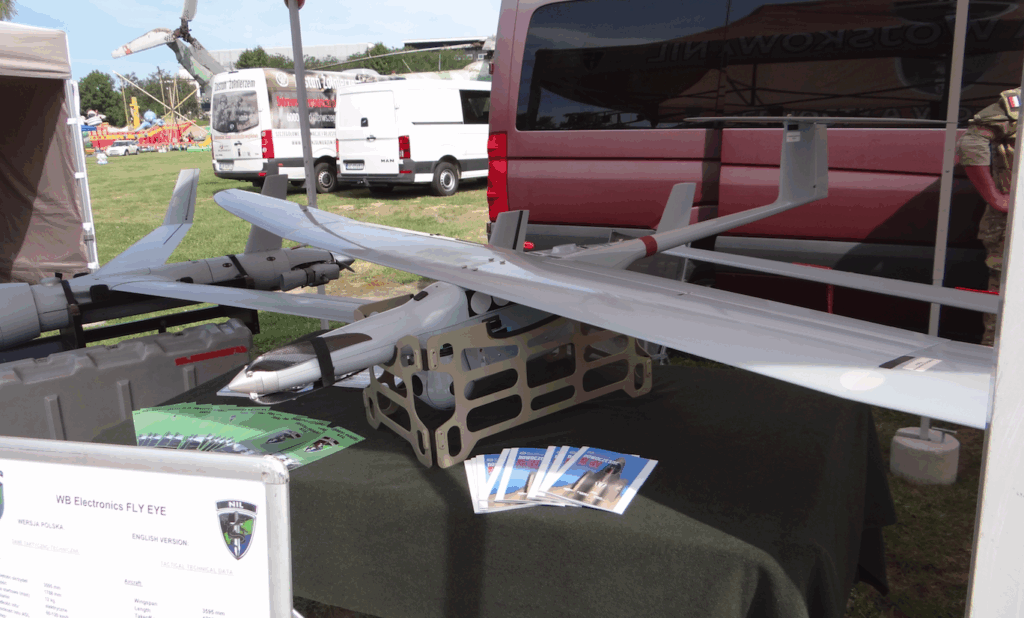
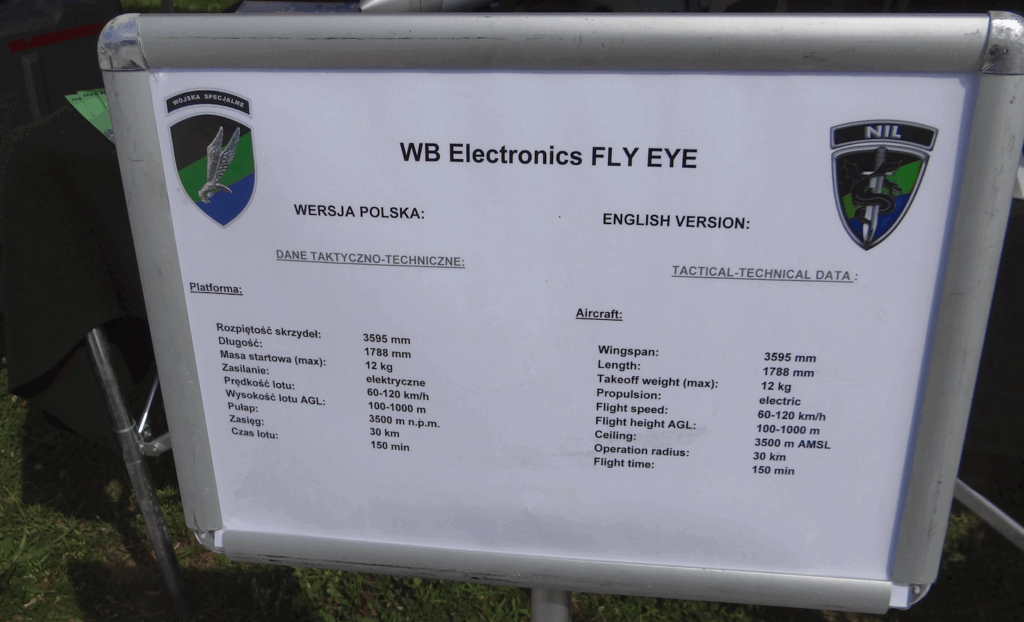
The FlyEye unmanned aerial system is an advanced Unmanned Aerial Vehicle, developed in Poland by Polish engineers, implemented into serial production and adopted by the Polish Army. The manufacturer is Flytronic, a company based in Gliwice and belonging to the WB Group. The system proved to be excellent during the war in Ukraine. The system has a very wide range of tasks. It can be used to observe the battlefield, control artillery, retranslate signals, patrol borders or monitor critical infrastructure. In Poland, the system is used by the Polish Armed Forces, the Border Guard, and other uniformed services.
All solutions used in FlyEye are the intellectual property of GRUPA WB. This allows for full national control over the system. The domestic design and production enable fast deliveries to customers, as well as any modifications and adaptation of FlyEye to user requirements. The FlyEye system allows you to complete a mission even with very strong impact of electronic warfare (EW). The modular design of FlyEye allows you to prepare the drone for take-off and fold it after landing, in less than ten minutes. The take-off itself is automatic, the BAL is released “from the operator’s hand”. FlyEye is characterized by very low demand for service activities. No supporting equipment in the form of a launcher or pneumatic catapult is needed for take-off. Landing can occur in any terrain. This significantly reduces the weight of the transported set. The BAL FlyEye can be launched from any location, even from a small boat. The BAL can be integrated with very light precision weapons, including a vector acoustic system used to detect the sources of the shot. The main opto-electronic head is placed centrally under the ship’s hull. This ensures a wide range of observation from the air. The first of the cameras mounted in the head is a television camera and is used to monitor the selected area in daylight. The second is an uncooled thermal imaging camera, useful during operations at night. It can be used, for example, to search for missing persons or locate a fire. The head can be modified depending on the needs of the ordering party. FlyEye is particularly adapted to carry out missions involving very precise provision of the location of artillery targets and correction of hit locations.
BAL FlyEye can move along a designated route by planning turning points in a 3D system. It can also follow a designated image, for example a wheeled vehicle or a recognized person. The system can perform convoy mode, using a mobile antenna. The FlyEye drone can also circle over a designated object or area. The system can operate outside the communication range, and after regaining communication it will transmit the collected data. BAL FlyEye lands automatically at the designated location.
FlyEye T-T data: Manufacturer Flytronic. Plastic construction. Wingspan 3.60 m. Length 1.80 m. Height 0.43 m. Take-off weight 12 kg. Operating speed 60-120 km/h. Flight ceiling up to 3,500 m. Flight time over 2.5 hours. Radio communication range over 40 km. Flight range up to 300 km, when following a BAL communication station. Radio communication system C-band (NATO). Drive; electric motor powered by lithium-polymer battery.
FlyEye was first publicly presented on June 14, 2010, at Eurosatory in Paris. WB Electronics Group presented the modernized FlyEye project on December 10, 2010. The device received a modified empennage to a empennage in the letter “T” configuration. The shape of the wings and their profile were improved.
In October 2010, BAL FlyEye was used to search for a missing child in the Augustów area.
In October 2010, the Military Unit “Nil” (special unit) announced a tender for the delivery of two sets of unmanned aerial vehicles. The tender was won by the WB Electronics FlyEye product. Two sets, each with four flying devices, were ordered on October 29, 2010. Unlike other BALs that were already used in the Polish Army, FlyEye was a purely Polish product, without any foreign involvement. These drones were used in Afghanistan.
On November 18, 2010, an agreement was signed to purchase two more FlyEye sets, intended for the Rosomak KTO combat vehicles. On February 13, 2013, after negotiations conducted as part of an urgent operational need, an agreement was signed to deliver another 12 sets of FlyEye drones to the Polish Army. All the devices were delivered in the period 2013–2014. On December 23, 2014, the tender for mini-class unmanned aerial vehicles for the Border Guard was resolved. The winner was WB Electronics FlyEye. The drones were delivered to the Border Guard from the following units: Podlasie Branch in Białystok and Nadbużański Branch in Chełm.
The new version of FlyEye 3.0 now had a range of up to 80 km. The drone also received new cameras. The operating system was also changed from Windows to Linux. The system has also been adapted to work with artillery systems. In 2018, a system was ordered for the Territorial Defense Forces. A total of 12 sets were ordered. The concluded contract had options for another 10 BAL units. Deliveries were completed by the end of 2019. In 2022, the Polish Army ordered another 11 FlyEye sets. By 2022, the Polish Army had 124 drones, and 54 sets were in production, each with 4 drones.
In 2021, the WOT forces announced that their drones had spent over 2,000 hours in the air, including 1,400 hours at night. It was no secret that these flights were carried out on the Poland-Belarus border. Polish soldiers defended the border against refugees from dictators Lukashenko and Putin. In March 2024, WB Electronics reported that over 1,000 drones had already been produced.
Poland has delivered a lot of valuable equipment to Ukraine, and in addition to Piorun missiles, MiG-29 aircraft and PT-91 Twardy tanks, FlyEye drones have been delivered. Ukraine has been using FlyEye drones since March 2015. Initially against separatists in the east, and then against Moscow’s troops. Allegedly, on June 7, 2022, Moscow’s troops shot down one FlyEye drone. Allegedly, a second FlyEye drone was also destroyed. Certainly, the Ukrainian side uses FlyEye drones to correct the fire of HIMARS missiles.
Written by Karol Placha Hetman

